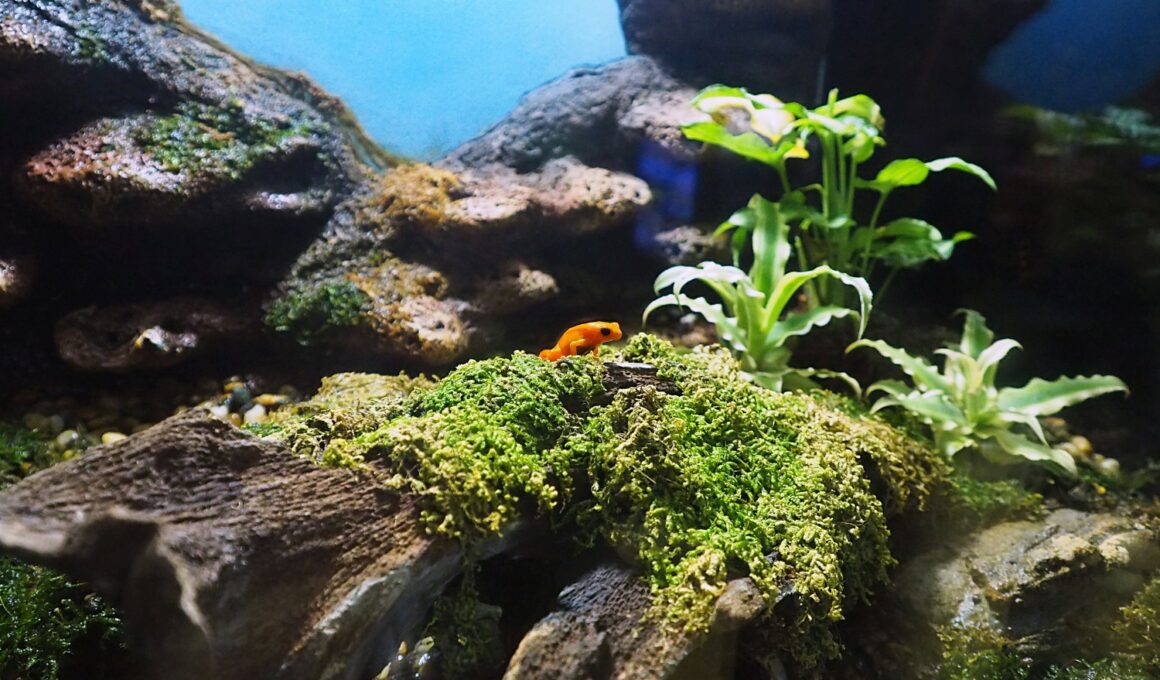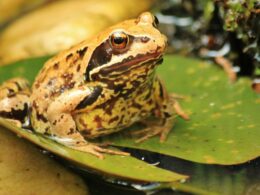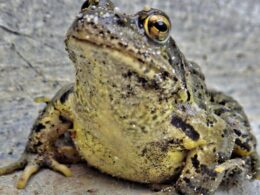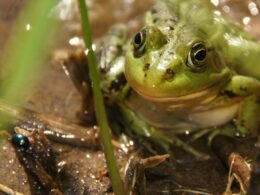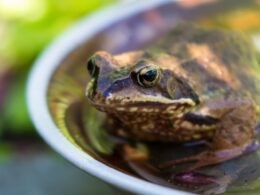In this article Show
As an avid pet lover and someone who spends countless hours diving into the world of reptiles, I often encounter questions that pique my interest. One that frequently comes up, especially among those new to the amphibian realm, is about the Pacman frog.
This vibrant, distinct frog has gained considerable popularity in recent years. But with its popularity comes a pressing query: Can a Pacman frog truly be happy and healthy in a 5-gallon tank?
While there’s a lot of information out there, it’s essential to sift through the clutter and focus on the facts. Stick with me, and by the end, you’ll be equipped with the knowledge to make the best decision for your pacman frog
Can a Pacman Frog Live In a 5-gallon Tank?
No, a Pacman frog cannot thrive in a 5-gallon tank for its entire lifespan. While suitable for juveniles, they require more space to accommodate their size, hunting behavior, and overall well-being as they grow. Adult Pacman frogs, especially females, can reach sizes up to 7 inches, making larger habitats like 10-gallon tanks or terrariums more appropriate. Regular monitoring, cleaning, and habitat enrichment are essential to ensure a Pacman frog’s health and comfort.
Ideal Habitat Requirements For Pacman Frogs
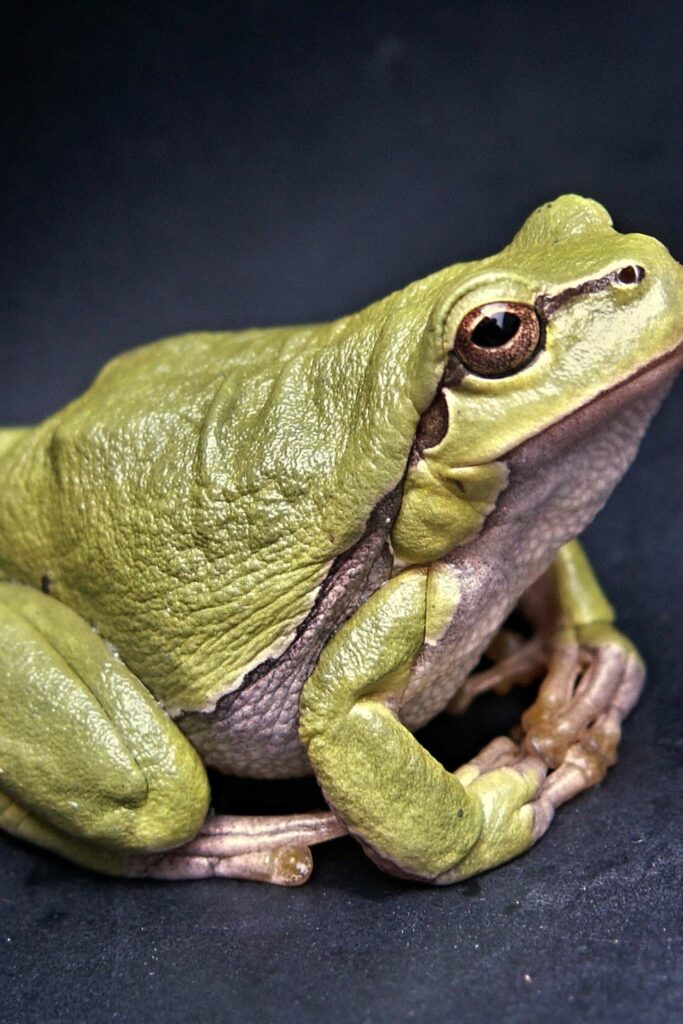
Space Needs
Growth Potential of Pacman Frogs
While these fascinating amphibians start their lives as tiny creatures, their growth potential is significant. As mentioned, an adult Pacman frog can reach sizes up to 7 inches, especially the females. Such rapid and extensive growth means that they’ll need more space over time to accommodate their expanding bodies.
Importance of Space for Movement and Hunting
At first glance, considering the Pacman frog’s sedentary nature, one might think they don’t require much space. However, that’s a misconception. While they might not be the most active roamers, they do need adequate space for two primary reasons: to shift positions comfortably and for their ambush-style hunting.
A cramped space can hinder their natural hunting behavior and may lead to increased stress levels.
Substrate Choices
Preferred Substrates for Pacman Frogs
Substrate selection is crucial for these frogs. They prefer substrates that mimic the moist forest floors of their natural habitat. Coconut coir, sphagnum moss, and organic topsoil are among the top choices.
These substrates not only provide comfort but also aid in their camouflage during their ambush hunting.
Importance of Moisture Retention
Pacman frogs are native to humid environments, which means the substrate’s ability to retain moisture is crucial. A substrate that dries out quickly can harm the frog’s skin health and overall well-being.
Hence, substrates like coconut coir and sphagnum moss, which are excellent at holding moisture, are highly recommended.
Temperature and Humidity
Optimal Temperature Ranges
Pacman frogs thrive in a temperature range that mirrors their tropical habitat. During the day, temperatures between 75°F to 85°F are ideal. At night, a slight drop, ideally between 65°F to 75°F, is suitable. Monitoring and maintaining these temperatures consistently for the frog’s health is crucial.
Importance of Maintaining The Right Humidity Level
Humidity plays a pivotal role in the life of a Pacman frog. Maintaining a humidity level of around 60% to 80% is crucial. A hygrometer can be a handy tool to ensure that these levels are consistent. Remember, inadequate humidity can lead to problems like skin shedding issues and dehydration.
Creating a habitat that mirrors the Pacman frog’s natural environment isn’t just about aesthetics. It’s essential for their health, longevity, and overall well-being. As we continue to explore the possibility of housing them in a 5-gallon tank, these habitat requirements will be central to our evaluation.
Pros & Cons Of A 5-Gallon Tank For Pacman Frogs
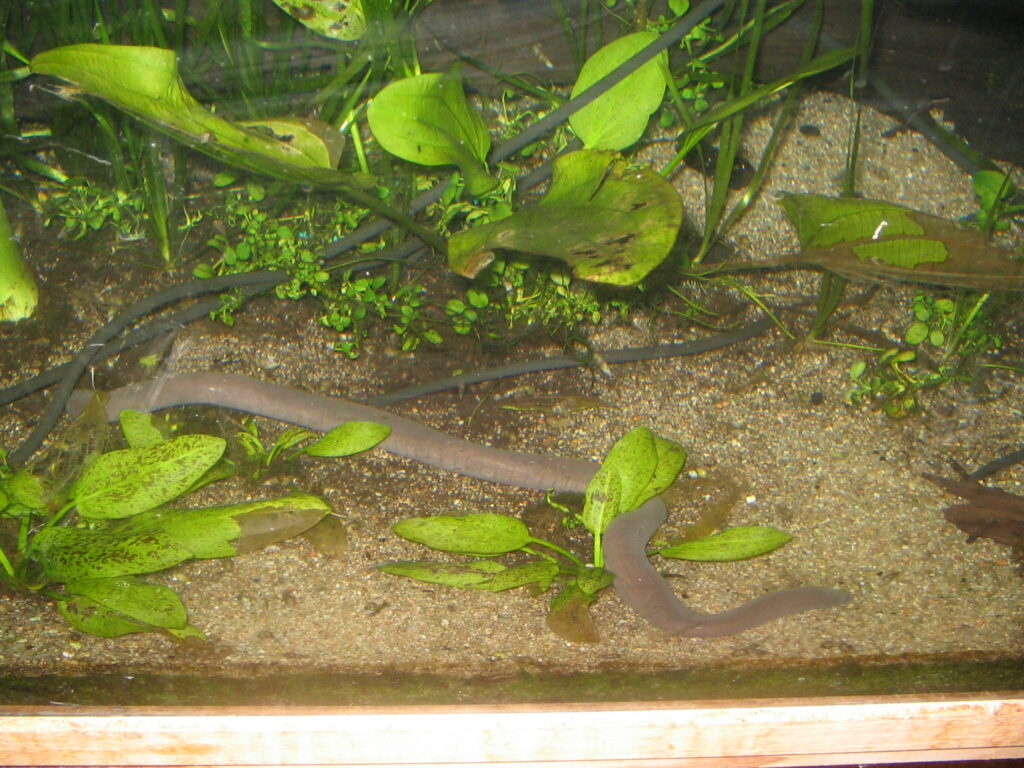
There’s been a fair bit of chatter in the reptile and amphibian community about the suitability of 5-gallon tanks for Pacman frogs. To make an informed decision, let’s weigh the pros and cons:
Pros
Suitable for Juvenile Pacman frogs
Young Pacman frogs are considerably smaller than their adult counterparts. In the early stages of their lives, a 5-gallon tank can indeed provide enough space for them to move, hunt, and grow. This makes it a feasible choice for those just starting their journey with a young Pacman frog.
Convenient Size for Many Homes and Apartments
Space is often a luxury, especially for those in urban settings. A 5-gallon tank doesn’t occupy much room, making it a convenient choice for apartments, dorm rooms, or smaller homes. It’s easy to place on a sturdy desk or shelf, ensuring your froggy friend can be a part of your living space without dominating it.
Easier Temperature and Humidity Control
Smaller tanks can sometimes make it simpler to regulate temperature and humidity, given there’s less space to manage. With the right tools, like a small heater and a good hygrometer, achieving the optimal conditions for your Pacman frog becomes more straightforward.
Cons
May Become Inadequate as The Frog Grows
While a 5-gallon tank may be suitable for juveniles, it can quickly become cramped as the frog reaches its full size. A full-grown female, pushing 7 inches, will find the space limiting, potentially leading to discomfort and stress.
Limited space can lead to stress or health issues
A confined space can hinder the natural behaviors of the Pacman frog, especially their ambush-style hunting. Over time, this can lead to stress, which, as with many animals, can trigger health issues. Stress in amphibians might manifest as a weakened immune system, making them susceptible to diseases.
Frequency of Cleaning and Maintenance
Given their smaller size, 5-gallon tanks can become dirty faster, especially with a growing Pacman frog producing waste. This means a higher frequency of cleaning and maintenance to ensure a hygienic environment. Regular cleanings can be both time-consuming and potentially stressful for the frog.
The 5-gallon tank debate is multifaceted. It’s not just about size but also about the quality of life we want to provide our Pacman frogs. Making an informed decision means considering both the immediate convenience and the long-term well-being of our amphibious pals.
Key Tips for a Healthy Pacman Frog in a Small Tank
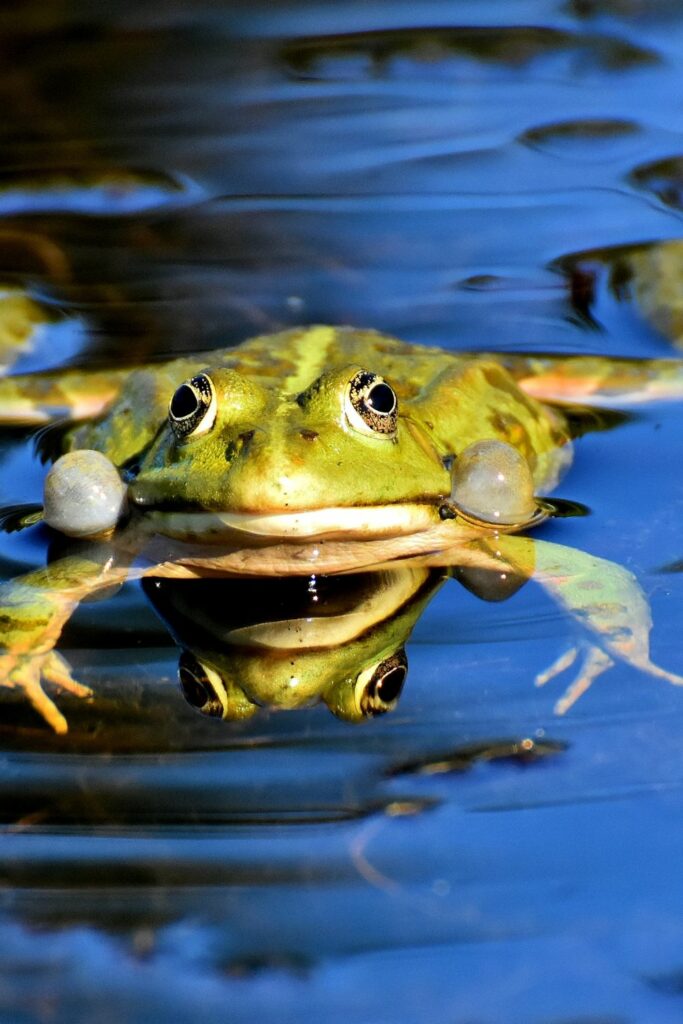
Opting for a smaller tank, like a 5-gallon one, for your Pacman frog might be based on various reasons ranging from space constraints to budgetary considerations. However, with a compact space comes increased responsibility to ensure the well-being of your frog. Here are some key tips to ensure your Pacman frog thrives even in a smaller tank:
Regular Monitoring
Checking for Signs of Stress or Discomfort
A proactive approach to your frog’s health involves regularly observing it for signs of distress. Signs like reduced appetite, unusual aggression, or persistent hiding might indicate that your frog isn’t comfortable in its environment. Also, look for physical signs such as discoloration, shedding issues, or lesions.
Monitoring Growth to Decide on Tank Upgrades
Pacman frogs grow relatively quickly. It’s essential to keep an eye on their size in relation to the tank space. If you notice your frog seems constrained or unable to move freely, it might be time to consider a larger habitat.
Routine Cleaning
Importance of Maintaining Cleanliness in Smaller Tanks
Cleanliness is paramount in smaller tanks. With limited space, waste can accumulate faster, leading to an unhealthy environment rife with bacteria and other pathogens. A dirty tank can also lead to issues like fungal and bacterial infections in frogs.
Recommended Cleaning Schedules
For a 5-gallon tank housing a Pacman frog, it’s advisable to spot-clean daily, removing any visible waste or uneaten food. A thorough cleaning, where you replace the substrate and clean the tank’s interior, should be done at least once a month. Always ensure to use dechlorinated water and avoid harsh chemicals.
Enrichment
Ways to Keep Pacman Frog Stimulated in a Limited Space
While Pacman frogs are relatively sedentary, they still benefit from an enriched environment. In a smaller tank:
- Varied Substrates: Occasionally change the substrate type to give a different feel underfoot. This can be stimulating for the frog.
- Hideouts: Introduce small caves or leaves for hiding. These can serve as both resting spots and hunting ambush points.
- Diet Variation: Offer a diverse diet. Different prey items not only ensure nutritional balance but also provide hunting variety.
- Safe Plants: Introducing safe, live plants can enhance the tank’s aesthetic and provide a touch of naturalism.
Providing the best for your Pacman frog in a smaller space is indeed a challenge, but with careful attention and dedication, it’s entirely possible. Remember, the key lies in understanding their needs and being responsive to any signs that suggest adjustments are required.





